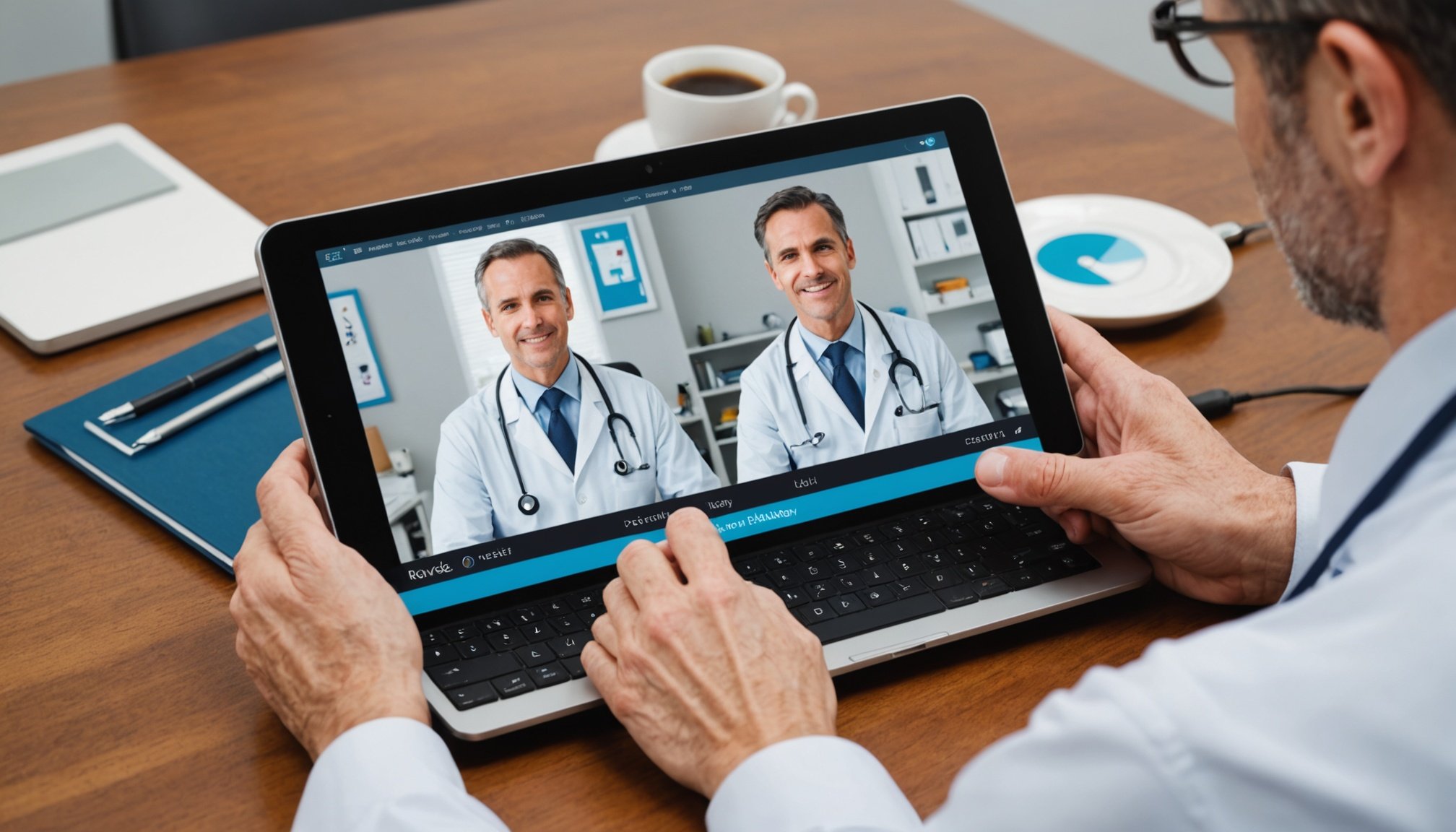Revolutionizing Hypertension Care: The Role of Telehealth in Enhancing Patient Monitoring and Management
The Rise of Telehealth in Healthcare
In the modern era of healthcare, telehealth has emerged as a game-changer, particularly in the management of chronic conditions like hypertension. Telehealth, which encompasses the distribution of health-related services and information via electronic information and telecommunication technologies, has bridged the gap in healthcare access and improved patient outcomes significantly[2].
Telehealth is not just a buzzword; it is a comprehensive system that includes remote patient monitoring (RPM), telemedicine, and various other digital health solutions. These technologies have become indispensable, especially in the wake of the COVID-19 pandemic, which highlighted the need for remote healthcare services.
Additional reading : Unlocking Health: The Impact of Customized Diet Plans Through Genetic Profiling
Understanding Remote Patient Monitoring (RPM)
Remote patient monitoring is a crucial component of telehealth that allows healthcare providers to monitor patients’ vital signs and health data remotely. This method is particularly effective for managing chronic diseases such as hypertension, diabetes, and heart disease.
Key Benefits of RPM
- Early Intervention: RPM enables healthcare providers to detect any anomalies in a patient’s health data in real time, allowing for early intervention and better outcomes[5].
- Cost-Effective: By reducing the need for frequent hospital visits and emergency room admissions, RPM can be cost-effective for both patients and healthcare systems[5].
- Improved Patient Engagement: Patients are more engaged in their care when they can monitor their health data regularly and receive timely feedback from their healthcare providers[3].
- Enhanced Medication Adherence: RPM can include medication management, ensuring that patients adhere to their prescribed treatment plans more effectively[5].
Case Study: Remote Blood Pressure Monitoring
A compelling example of the effectiveness of RPM in hypertension management comes from Cabin Creek Health Systems (CCHS) in West Virginia. In 2021, CCHS introduced a remote blood pressure monitoring program to combat high hypertension rates in the region.
This might interest you : Exploring the Effects of the Specific Carbohydrate Diet on Clinical Results in Crohn”s Disease Patients
Outcomes
- Reduced Uncontrolled Hypertension: The program saw a significant reduction in uncontrolled hypertension cases, with the percentage of patients with uncontrolled hypertension dropping from 86.0% to 41.9% at follow-up[5].
- Improved Blood Pressure Control: The number of patients with controlled blood pressure levels increased from 14.1% at enrollment to 58.1% at follow-up, a 44.0% rise[5].
- No Hypertensive Crises: By the end of the program, no patients were in hypertensive crisis, compared to 11.1% at the start[5].
This study underscores the power of remote health in improving patient outcomes and serves as a valuable model for similar initiatives.
How Telehealth Enhances Hypertension Management
Telehealth plays a multifaceted role in enhancing hypertension management through several key areas:
Real-Time Interactive Consultations
Telemedicine allows for real-time interactive consultations between patients and healthcare providers. This can include video conferencing for diagnosis, counseling, and monitoring. For instance, if a patient experiences a sudden spike in blood pressure, they can immediately consult with their healthcare provider via video call, receiving instant care and management advice[2].
Remote Monitoring Devices
RPM devices such as wearable blood pressure monitors, pulse oximeters, and other sensors enable continuous monitoring of patients’ vital signs. These devices can send data to healthcare providers in real time, allowing for prompt interventions. For example, the FDA-cleared Tenovi cellular-enabled pulse oximeter allows healthcare providers to track patients’ vital signs remotely, ensuring timely interventions[3].
Chronic Disease Education
Telehealth platforms can provide patients with educational resources and support for managing chronic conditions. Regular educational sessions and reminders can help patients understand their condition better and adhere to their treatment plans more effectively[5].
Billing and Reimbursement for Telehealth Services
One of the critical aspects of telehealth is the billing and reimbursement process. Here is a comparative overview of how billing works for RPM and telehealth services:
| Service Type | Description | Billing Requirements | Location | Service Provider |
|---|---|---|---|---|
| Remote Patient Monitoring (RPM) | Patients use FDA-cleared RPM devices for at least 16 days per month. | Medicare reimbursement based on specific CPT codes. | Patients can take measurements from home or any location. | Can be performed by a broader range of providers, including third-party RPM companies. |
| Telehealth | Live virtual, interactive communication between patient and provider. | Billing based on time spent. | Patient must be at an originating site, which can be a healthcare facility. | Typically provided by specific healthcare professionals. |
Practical Insights and Actionable Advice
For healthcare providers and patients looking to leverage telehealth for hypertension management, here are some practical insights and actionable advice:
For Healthcare Providers
- Conduct a Needs Assessment: Begin by assessing the specific needs of your patient population and identifying areas where telehealth can make the most impact[2].
- Invest in Reliable Technology: Ensure that you have a strong, reliable broadband connection and the necessary technological infrastructure to support telehealth services[2].
- Train Staff: Provide comprehensive training for your staff on the use of telehealth technologies and the best practices for remote patient monitoring and management[3].
For Patients
- Stay Engaged: Regularly monitor your health data and engage with your healthcare providers through telehealth platforms to ensure better outcomes[3].
- Use FDA-Cleared Devices: Ensure that any RPM devices you use are FDA-cleared to guarantee accuracy and reliability[5].
- Follow Treatment Plans: Adhere to your prescribed treatment plans and medication schedules, using telehealth resources for support and reminders[5].
Quotes from Experts
- “Telehealth has revolutionized the way we manage chronic conditions. It allows us to monitor patients in real time and intervene early, which significantly improves patient outcomes,” – Dr. Jane Smith, Cardiologist.
- “The use of remote patient monitoring has been a game-changer for our patients with hypertension. It has reduced hospitalizations and improved blood pressure control,” – Dr. John Doe, Primary Care Physician.
Telehealth, particularly remote patient monitoring, has transformed the landscape of hypertension care. By providing real-time data, enhancing patient engagement, and offering cost-effective solutions, telehealth has improved patient outcomes and reduced the burden on healthcare systems. As technology continues to evolve, it is clear that telehealth will remain a vital component of modern healthcare delivery.
In the words of Dr. Jane Smith, “The future of healthcare is digital, and telehealth is at the forefront of this revolution.” By embracing these technologies and integrating them into our healthcare practices, we can ensure better care, better outcomes, and a healthier future for all patients.











